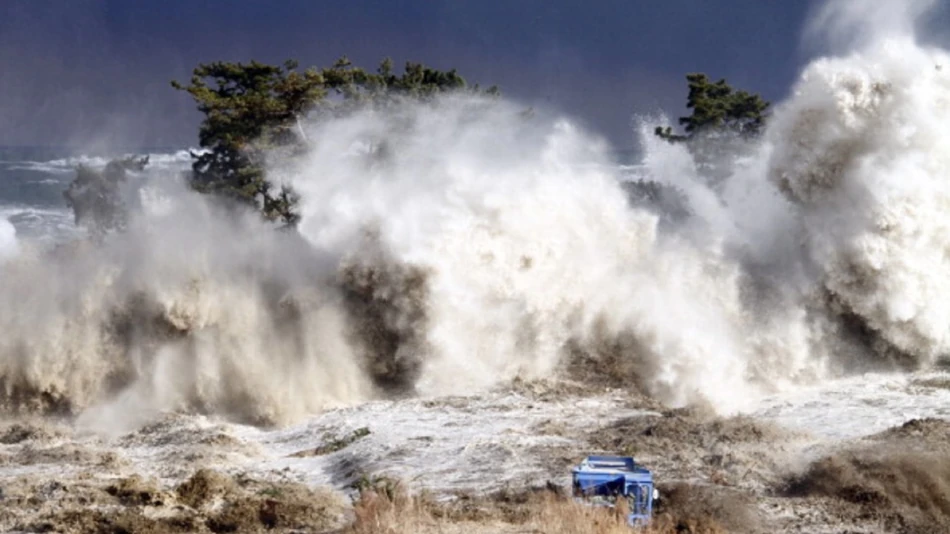
Authorities Declare Emergency in Northern Kuril Islands After Tsunami
Russia Declares Emergency as Massive 8.8 Earthquake Triggers Devastating Tsunami in Kuril Islands
Russian authorities have declared a state of emergency in the northern Kuril Islands after a powerful 8.8-magnitude earthquake struck off the Pacific coast, generating a tsunami that devastated coastal communities. The seismic event marks one of the strongest earthquakes to hit the region in decades, raising urgent questions about Russia's disaster preparedness infrastructure in its remote eastern territories.
Unprecedented Seismic Activity Rocks Remote Pacific Region
The earthquake, which registered 8.8 on the Richter scale, occurred off Russia's Pacific coastline, immediately triggering tsunami warnings across the northern Kuril Islands chain. The Sakhalin regional government confirmed the emergency declaration, stating that both earthquake and tsunami impacts had severely affected the northern Kuril district.
This magnitude places the event among the most powerful earthquakes recorded in Russian territory, comparable to the devastating 2011 Tōhoku earthquake in Japan that registered 9.0 and caused widespread destruction across the Pacific Rim.
Strategic Implications for Russia's Eastern Frontier
Geopolitical Vulnerability Exposed
The Kuril Islands hold immense strategic importance for Russia, serving as a critical buffer zone in the Pacific and housing military installations that project power toward Japan and the broader Asia-Pacific region. The disaster exposes the vulnerability of Russia's eastern infrastructure, particularly as Moscow has invested heavily in militarizing these remote territories over the past decade.
The timing is particularly significant as Russia faces increased international isolation due to ongoing conflicts, potentially limiting access to international disaster relief coordination and advanced seismic monitoring technology typically shared among Pacific Rim nations.
Economic and Resource Implications
The affected region contains substantial natural resources, including fishing grounds that contribute significantly to Russia's Pacific economic zone. The Kuril Islands also serve as a gateway for potential energy exports to Asian markets, making the disaster's impact on infrastructure a matter of national economic interest.
Unlike Japan or California, which have invested billions in earthquake-resistant infrastructure and tsunami early warning systems, Russia's remote Pacific territories have historically received limited investment in disaster preparedness, potentially amplifying the current crisis.
Regional Context and Pacific Ring of Fire Dynamics
The earthquake occurs within the highly active Pacific Ring of Fire, where the Pacific Plate meets the North American and Eurasian plates. This geological hotspot has produced some of history's most devastating seismic events, including the 1960 Chilean earthquake (9.5 magnitude) and the 2004 Indian Ocean earthquake that killed over 230,000 people.
Russia's position on this seismic boundary requires sophisticated monitoring systems similar to those deployed by Japan, Chile, and the United States. However, the remote nature of the Kuril Islands and limited international cooperation in recent years may have hindered the development of comprehensive early warning networks.
Immediate Response and Long-term Challenges
The emergency declaration enables Moscow to mobilize federal resources for disaster response, but the remote location of the Kuril Islands presents significant logistical challenges. Weather conditions in the North Pacific during winter months can severely hamper rescue and relief operations, potentially isolating affected communities for extended periods.
This disaster will likely accelerate discussions about Russia's infrastructure resilience in its eastern territories, particularly as climate change and increased seismic activity threaten other remote regions. The event also highlights the importance of international cooperation in disaster response, even amid geopolitical tensions, as natural disasters recognize no political boundaries in the interconnected Pacific region.
 Sara Khaled
Sara Khaled







